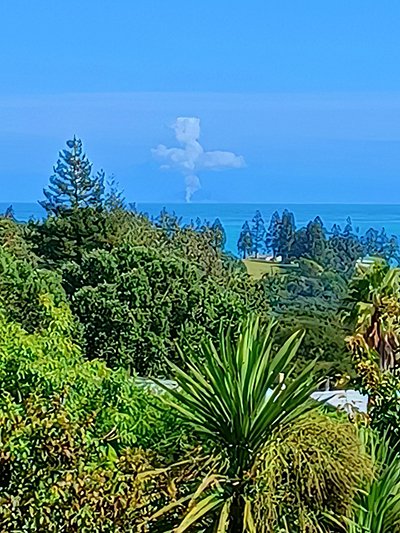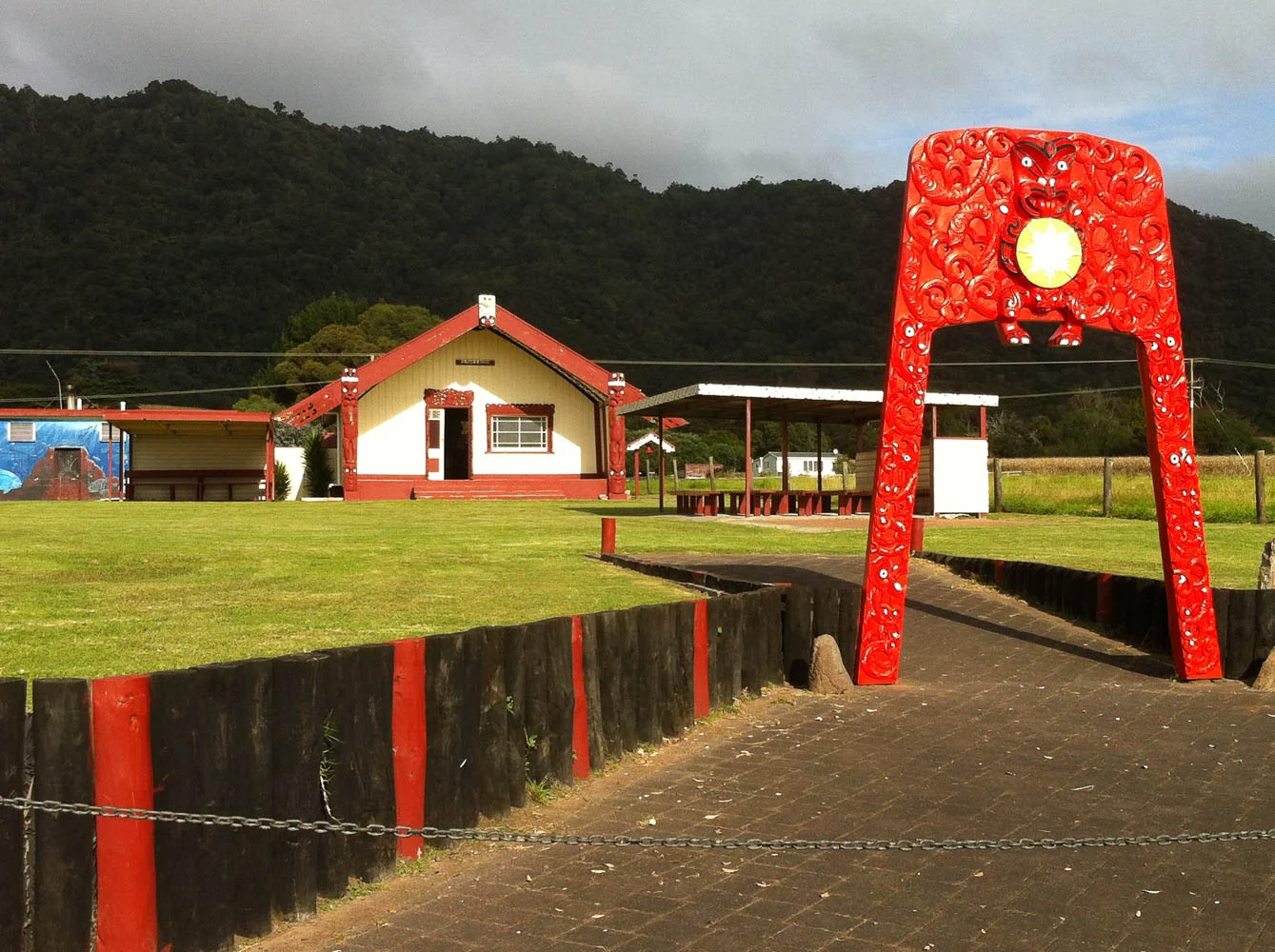Things to Do on State Highway 35
If you’re coming east from Opotiki, State Highway 35 offers stunning views of the Pacific Ocean and some rare opportunities to travel past active papakainga/housing on ancestral land.
Traffic is minimal and if you’re a first time visitor to NZ this will likely be one of the highlights of your trip.
There are no petrol stations for some distance on State Highway 35 and I would urge you to fill up before leaving Opotiki or Gisborne. Similarly there are few stores along the early part of the route and if you’re planning to prepare and cook your own meals then you need to ensure that you have all the fresh food you might need.

White Island spouting Cross shaped Steam
12kms out of Opotiki is the turnoff to Omaramutu, less than 1 km off the main road. The interior of Omarumutu War Memorial Hall is beautifully decorated in Maori tradition.
The Tutumure wharenui/meeting house may be viewed from outside unless you are invited in. Generally, visitors are asked not to enter the marae and the area around the wharenui/main meeting house unless invited; marae are homes and should be treated as such. If you are invited inside and shown around it is a good idea to offer a koha. See more above.
A little further along State Highway 35 is the turnoff to Opape a charming little beach which is good for swimming.
About 40kms East of Opotiki the road crosses the expansive Motu River and a couple of companies organise jet boat rides up the river. If you are interested in taking an exciting jet boat ride then make your booking before you begin your State Highway 35 adventure. Wet ‘n’ Wild offer overnight trips for the more adventurous.
10 kms on you will travel through Whitianga Bay – a highlight on this stretch of coast. There is also a marae there which one can see from the road.
Check out Little Awanui, presenting a great photography opportunity on the way into Te Kaha where you can buy last minute supplies.
Te Kaha was once an old whaling station. This no longer exists and Te Kaha is largely a farming/horticultural community. Macadamia nuts, kiwi fruit and avocado are grown in this area.
Driving east from Whanarua Bay, you will quickly find yourself at Papatea Bay, more popularly known as Maraehako. Further on, perched on the promontory you’ll see the very charming Raukokere Church with its wooden buttresses to hold it up against the wind. The church is rarely locked and visitors are welcome.
Waihau Bay is famous for its deep sea fishing and it may be possible to arrange a charter boat. At the annual fishing competitions in the SummerMarlin and Tuna are brought infor weighing.
Detour to the East Cape lighthouse. The Cape is the first place in the world to see the sun rise. On a pot-holed road it takes about 30 minutes to drive out to the lighthouse from Te Araroa and there are about 700 (easy-depending on your age and level of fitness) steps to the top; the view is well worth the climb. It’s here that you “turn the corner” and start moving in a moresoutherly direction. You are now leaving the land of Te Whanau-A-Apanui and entering the tribal lands of Ngati Porou.
Travelling on to Gisborne, stop at St Mary’s church at Tikitiki to see the wonderful wood carving and tukutuku panels. Keep an eye out for Mt Hikurangi, the revered Maunga/mountain of Ngati Porou. If you decide to take an independent tramping trip or prefer a guided tramp to the summit (recommended) you do need to let Ngati Porou what your plans are.
Te Puia Springs, Waipiro Bay, Tokomaru Bay and later, Tolaga Bay will take you back a few years to another time. Detouring from the main road down dirt roads will reward you with wonderful near-deserted sandy beaches at Anaura, Waima and Kaiaua.
A walk along Tolaga Bay wharf will give you some idea of how busy the coast would have been before the roads went through and ships stopped at all the coastal ports to pick up and deliver goods and travelers.
There’s also the walk over to Cook’s Cove if you’re fit and have the time. The walk takes about 2 and a half hours and takes trampers over private farm lands, so no dogs are allowed. The cove is named after James Cook who stopped there in 1769. Many botanical specimens were gathered here by Joseph Banks.
Near Gisborne are more wonderful beaches; Tatapouri, Makarori, Wainui and Waikanae, the pride of the city.















